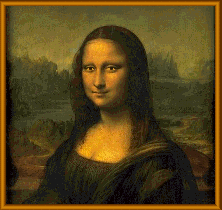Fern
Member
- Location
- New Zealand
I don't go along with the opening of a tomb/s to satisfy people's curiosity. This time 'they' are hoping it is the 'real' Mona Lisa. It's one thing to come across a tomb or remains while excavating, its another to
deliberately vandalise it.vandalise it.
deliberately vandalise it.vandalise it.
stuff.co.nzA centuries-old tomb was opened on Friday in a search for the remains of the woman with the enigmatic smile.

MONA LISA'S SMILE: Is the five-century hunt over? Looks like it might just be.
Related Links
Researchers opened a centuries-old Florence tomb on Friday in a search for remains that could confirm the identity of the woman whose enigmatic smile Leonardo da Vinci immortalised in the "Mona Lisa", one of the world's most famous paintings.
A round hole, just big enough for a person to wriggle through, was cut in the stone church floor above the family crypt of Florentine silk merchant Francesco del Giocondo, whose wife Lisa Gherardini is thought to have sat for the Renaissance master in the early 16th century.
Theories abound about who the real Mona Lisa was, but Silvano Vinceti, a writer and researcher who heads Italy's National Committee for the Promotion of Historic and Cultural Heritage, plans to test DNA in the bones in the dank space and try to match it with those of three women buried at a convent nearby.
Historians say Gherardini - whose married name 'Gioconda' is used in Italy to refer to the Mona Lisa - spent her last years at the Saint Orsola convent, a dilapidated building where the hunt for her bones began last year.
Vinceti believes one of the three could be Lisa Gherardini.
"For centuries, historians the world over have been coming up with various theories about who this enigmatic, mysterious woman could have been," he told journalists outside the Santissima Annunziata basilica in Florence.
Vinceti hopes some of the bones lying in the cramped underground room behind the Santissima Annunziata's main altar will belong to at least one blood relation of Leonardo's muse, probably her son Piero.
Once a DNA match is made, Vinceti says an image of Gherardini's face can be generated from the Saint Orsola skull and compared with the painting, the biggest attraction in the Louvre museum in Paris.
"When we find a match between mother and child - then we will have found the Mona Lisa," he said.
HALF SMILE
The painting, which draws millions of visitors each year, is famous for the sitter's mysterious half-smile. The Louvre says it was probably painted between 1503 and 1506.


